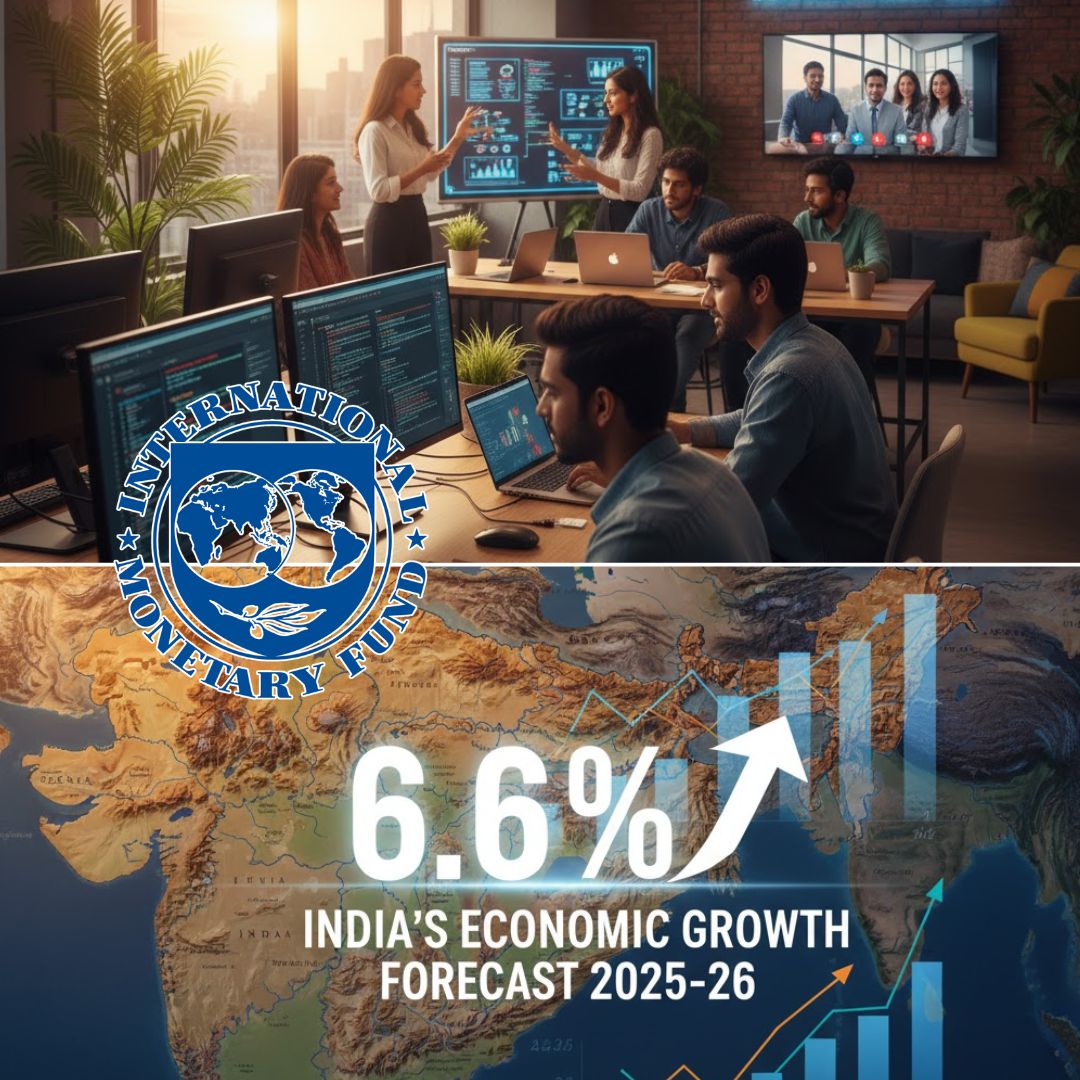The International Monetary Fund (IMF) recently raised its forecast for India’s GDP growth to 6.6% for the fiscal year 2025-26, up from an earlier projection of 6.4%. This revision reflects India’s robust economic momentum, particularly visible in the first quarter of the fiscal year (April to June 2025), when the economy grew at a striking 7.8%. Strong private consumption, boosted by recently introduced sweeping GST reforms and reduced tax rates on consumer goods and services, has powered domestic demand.
These internal drivers are expected to help the economy offset external challenges, especially the significant tariffs imposed by the United States on Indian exports since July 2025. According to the IMF’s World Economic Outlook, these developments underpin India’s position as the world’s fastest-growing major economy, outpacing China’s expected growth of 4.8% in the same period.
Global Environment: Trade Tensions and Protectionism
India’s strong forecast stands out against a backdrop of global economic slowdown, trade uncertainties, and protectionist policies. The IMF projects global growth at about 3.2% in 2025, slowed by tightening financial conditions and geopolitical tensions affecting investment and international trade. US tariff hikes on Indian goods, reaching as high as 50%, threatened to dampen export growth, yet India’s domestic economic factors and diversified sectors have helped mitigate this impact.
The IMF report highlights that emerging markets beyond India are facing fragility, emphasizing the significance of India’s continued resilience and reforms in maintaining momentum. However, the outlook cautions on risks such as weakening external demand and capital flow disruptions that could influence medium-term growth prospects.

India’s Accelerating Economic Transformation
India’s growth story is being fuelled by multiple factors: dynamic services and manufacturing sectors, rising consumer confidence, increased private investment, and rural demand supported by a strong agricultural output. The services sector alone registered growth of 9.3% in the first quarter of 2025-26, reflecting rising activity across trade, transport, finance, and other services.
The government’s commitment to reforms, including GST and tax policy improvements, is facilitating business and consumption. With the economy currently ranked fourth globally, projections suggest India could become the world’s third-largest economy by 2030 with an estimated GDP of $7.3 trillion.
This rapid economic expansion promises to reshape India’s global standing and drive improvements in employment and standards of living.
The Logical Indian’s Perspective
The IMF’s forecast confirms India’s remarkable economic resilience and potential to lead global growth despite external headwinds. At The Logical Indian, such progress is a testament to policies rooted in inclusion, adaptive reforms, and the strength of India’s diverse population.
Nevertheless, growth must not be pursued at the expense of social equity or environmental sustainability. Our commitment is to encourage dialogue and empathetic policymaking that nurtures harmonious development benefiting all citizens.
IMF Growth Projections for 2025
— IMF (@IMFNews) October 24, 2025
🇺🇸 US: 2.0%
🇩🇪 Germany: 0.2%
🇫🇷 France: 0.7%
🇪🇸 Spain: 2.9%
🇬🇧 UK: 1.3%
🇨🇳 China: 4.8%
🇯🇵 Japan: 1.1%
🇮🇳 India: 6.6%
🇷🇺 Russia: 0.6%
🇧🇷 Brazil: 2.4%
🇸🇦 Saudi Arabia: 4.0%
🇳🇬 Nigeria: 3.9% https://t.co/bbUb7LaE1v pic.twitter.com/VoVVV2TaT3












